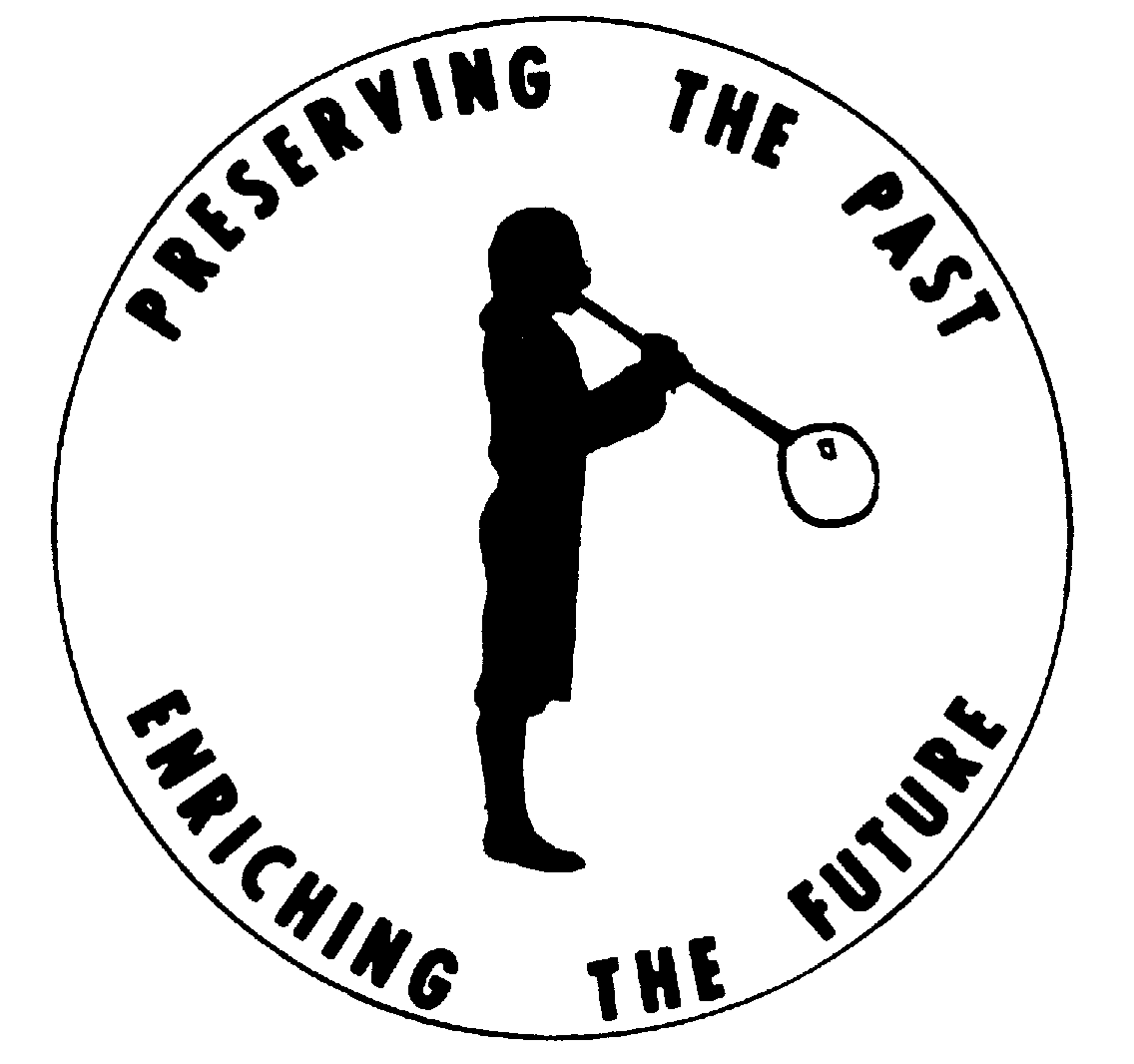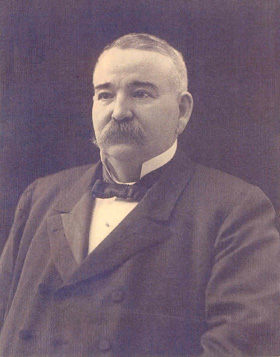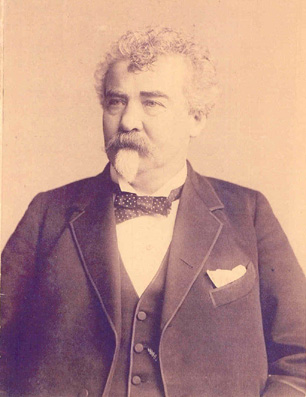
 |
Historical Highlights?Averill? |
Somebody once asked me, "Is Averill Park named after Averill Harriman, the former Governor of New York State?" The answer is of course, "No." (In fact, the former Governor's name was spelled Averell. Ed.) But this question got to me.How did it come about? The Hamlet was formerly called Sand Lake and was located on Sand Lake. But now we have Averill Park on Crystal Lake! How did it happen? The Averill family and its descendants lived in Sand Lake from its earliest days. Was it named after the family? Where did Park come from? There were also a number of famous early settlers such as Fox, Knowlson and Horton. Why Averill? The answer may be found by looking at the Averill's history in the Sand Lake area. Who were they? What did they do? The Averill family traces their ancestors back to Isaac Averill. "Isaac, the emigrant," who was born in 1685 in Milford Haven, Wales, sailed from England, landed in Massachusetts Bay and settled in Topefield, Massachusetts. Later he moved to Preston, Connecticut, and, sometime before 1748, settled in the Town of Kent (now Washington) in Montgomery County. Two generations later, on June 25, 1750, a second Isaac Averill was born in Milford, Connecticut. This Isaac Averill studied medicine, became a doctor and served as a surgeon in the Revolutionary War. He married Hanna Miles, on Jan. 25, 1775. They had 12 children. Among their children were two sons, William Franklin and James Gill, who are part of our story as they were the first Averills in Sand Lake. Just when and how they came to Sand Lake is not clear, but they left their mark. As far as can be determined, William F. Averill was the first Averill to live in the area that became the Town of Sand Lake. He was born in Columbia County on March 3, 1790. Some time in the early 1800s, he came to Sand Lake and had a farm on Teal Road. .In 1829 he built and was proprietor of a stage coach house called the Phoenix Hotel on the Troy Sand Lake Turnpike. The hotel was located diagonally across from the Glass Lake Inn, not far from the Glass Factory. It was not uncommon to see 20-30 teams of horses tied up in the yard. The hotel was destroyed by fire in 1845. William Averill was active in town government. He was Town Clerk in 1825, was elected Supervisor of the Town of Sand Lake in 1827 and later served as a Justice of the Peace. William Franklin died September 2, 1839. The second brother, James Gill Averill, was born in Flatbush, New York, on May 28, 1804. Some time later, he moved to Sand Lake and in 1827 married Clarissa Sliter, the daughter of Clement Sliter, an early resident of Sand Lake. They had six children, two of whom -- Horatio F. and James K. -- are the main characters in the naming of Averill Park. James Gill Averill moved to Sand Lake in 1830. Records indicate that he acquired the John Stephens store in Sand Lake. The store was remodeled into a tavern in 1830 and in the 1880s was enlarged as the Crist Crape's Central Hotel. Records also say that Clement Sliter ran the tavern that became the Crape's Hotel. Since William married Sliter's daughter, Clarissa, there has to be a connection. Did he marry the boss's daughter? James Gill Averill is best remembered as leading the Memorial Day Parade on his horse, "Moscow," a Civil War horse that is buried with him in the Sand Lake Union Cemetery. James Gill lived until 1881 and saw the name of the Town changed to Averill. Two of the sons of James Gill Averill and Clarissa Sluyter (Sliter), his wife, were born in the Town of Sand Lake. They led interesting lives and became prominent lawyers in New York City, as well as having homes in Sand Lake. |
||
 |
|
|
| In 1864, Horatio moved to West Virginia and founded the Averill Coal & Oil Co., which was a development of some 5000 acres of coal and oil lands in the great Kanawha River in Putman County, West Virginia. Among his associates were his cousin, William Averill and Henry J. Raymond of The New York Times. Horatio's obituary credits him as founding Raymond City, West Virginia. In 1867, Horatio Averill sold his interest in the Averill Coal & Oil Co. and returned to New York City. He was an eminent counselor of law and was admitted to practice in the Circuit and District Courts of New York State and the Supreme Court of the United States. Although living in New York he returned regularly to Sand Lake and lived at his Sand Lake home, Sunset Lodge, on Burden Lake Road. | ||
| James K. Averill, Horatio's younger brother, was born in Sand Lake on October 12, 1846. He was a student at Yale in 1865, but temporary illness and strained finances caused him to drop out. He spent a year as a teacher in Berlin, NY before entering Columbia Law School. James Averill graduated in 1869 and was admitted to the bar in Troy the same year. Between 1869 and 1873 he practiced law in New York City with his brother, Horatio. He then practiced alone in New York City for 4 years before he returned to Troy. From 1877 to 1883 he was in partnership with Albert Wooster, then district attorney of Rensselaer County. He worked in Troy and had his home in Sand Lake. |  |
|
| The development of Averill Park that led to its present name all began in the 1870s. It can only be guessed when Horatio Averill first had the idea of developing the land around the Hamlet of Sand Lake. But in the late 1860s, he was involved in a new railroad project that proposed a steam railroad be constructed from Albany and Troy, running directly through Sand Lake Village to the Hoosick Tunnel and on to Boston. The Hoosick Tunnel was then under construction, and his hope was to capitalize on this. A stock certificate, dated March 1870 for the Albany, Sand Lake and Stephentown Railway Company for two shares, is made out to Eber W. Carmichael, and is signed by two prominent Sand Lake residents, Albert R Fox , President, and Horatio F Averill, Secretary. The steam railroad was never built, but an electric trolley line was built in 1895.Horatio Averill began purchasing farms and large plots of land in the vicinity of Sand Lake. In 1874, he commissioned Burton Thomas to lay out a subdivision on a 75 acre plot at the south end of the village. The subdivision was named "Interlachen Park." This parcel was located on today's Burden Lake Road and Prospect Avenue. | ||
|
|
|
|
In 1875, William F. Scram, head of the Scram Collegiate Institute, died and this famous local school closed. Horatio Averill purchased the Institute and it was renovated into the "Averill Park Hotel," which became a well-known summer resort located near a large grove with boats and fishing on Sand Lake. Daily stagecoach service was available from Troy to the Hotel. The Hotel was also the office for the Troy Sand Lake Telephone Co. and had a connection to the A.P. Knowlson Drug Store in Troy. |
With this increase of activity, the need of a post office at Sand Lake grew. A search of the United States postal archives found that an application for a new post office to be named Sand Lake Mills at Rensselaer County was made, but no copy of the application was discovered. A post office Site Location Form was on record and a copy contained the following information. The proposed office to be called Sand Lake Mills, is crossed out and the name "Averill" substituted. It would be located on postal route 6224, which extended from Troy to West Stephentown. This route was operated by Henry D. Sharpe. The form was signed and returned by Albert Horton, proposed Postmaster, and certified by H. Lester, Postmaster of Sand Lake, on March 9, 1880.
It would appear that it must have been Albert Horton who changed the name. With the paperwork completed, a new Post Office was established, named the AVERILL Post Office and was dedicated May 31, 1880, with Frank Pettit as the first Postmaster. (What happened to Albert Horton?)
With the activity connected with the Interlachen Park subdivision and the promotion of the Averill Park Hotel, a new application was made and the name of the Post Office was changed to "AVERILL PARK" in 1882. So it appears that the post office and the village was named after Horatio F. Averill, as a result of his efforts to develop the area.
Horatio Averill had accumulated about 479 acres of land surrounding Sand Lake at an expenditure of $150,000. He died at his residence, 45 East 76th Street, New York City, on May 14, 1887, and was buried in the Sand Lake Union Cemetery. After his death, the mortgages on these lands were foreclosed. His brother, James K. Averill, took over the management of the lands and proposed to convey them to a land improvement company with a capital of $100,000. He offered creditors the opportunity to invest in the Averill Park Land Improvement Company, to share in its benefits and to obtain payment of their claim, which otherwise would be worthless. The stock was almost certain to be worth more than its par value.
| To induce these creditors to invest in the Land Company, James Averill pointed out that the survey for the Troy & New England Railway was completed and road work would begin within the next few months. Its completion would increase the value of their holdings. James Averill was also the principal backer of the Troy & New England Railway, which was completed as far as Averill Park in 1895. |
|
With James Averill's continued interest, The Averill Park Land Improvement Company was incorporated in 1896. James was the principal shareholder along with a number of Troy businessmen. James K Averill died in 1900. The Land Company continued operating into the 1900s but was in continuous financial trouble. It is sad that James's wife, Rebecca Jane Davis Averill, spent her final years paying off the family debts. - Bob Lilly, from Historical Highlights, Vol. 29, No. 3, Spring 2003 by Bob Lilly, from the Spring 2003 issue of Historical Highlights
![]() Created 8/16/2003; last revised
June 12, 2021
-- asm. © 2002-2024 Sand Lake Historical Society; all rights reserved.
Created 8/16/2003; last revised
June 12, 2021
-- asm. © 2002-2024 Sand Lake Historical Society; all rights reserved.